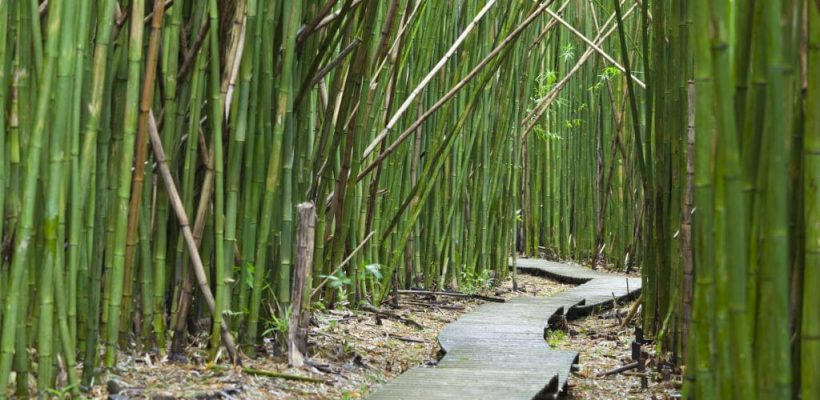In the realm of flora, few plants ignite curiosity quite like cacti and bamboo. They appear on opposite ends of the growth spectrum, one nestled firmly in arid climates while the other flourishes in the humid embrace of tropical and subtropical regions. Their contrasting environments establish not just their aesthetic differences but also the mechanisms of their growth. This article embarks on an exploration of their growth rates, promising a shift in perspective on what it means to thrive in diverse ecosystems.
Both cacti and bamboo have earned distinctive reputations; one for its rugged resilience, the other for its rapid scalability. Yet, the intriguing question remains: does cactus grow faster than bamboo? To effectively answer this, we must delve into the biology, ecological adaptability, growth conditions, and longevity of these remarkable plants.
Understanding Growth Rates: The Foundations of Time and Space
The growth rate of a plant is influenced by numerous factors, including species, environmental conditions, and soil quality. Cacti, belonging to the family Cactaceae, are specialized succulents well-adapted to arid environments. They manage to retain water and thrive despite scant rainfall. In contrast, bamboo, a member of the grass family Poaceae, exhibits rapid growth, with species like Moso bamboo capable of achieving astonishing heights in short periods under optimal conditions.
When we investigate the average growth rates, bamboo takes the lead. Certain bamboo species can grow up to 35 inches (about 91 centimeters) within a single day, depending on the environmental circumstances and care. Their rapid growth is facilitated by their unique rhizome system, which allows them to expand horizontally. This robust growth capability is nature’s design to access as much resources—sunlight, water, and nutrients—as possible in competitive ecosystems.
Cacti, however, boast a very different growth narrative. Among the many species, the saguaro cactus, for example, typically layers on just an inch of growth per year in its early stages, gradually increasing its rate as it matures. In conditions that are less than ideal, the growth can further slow, as cacti prioritize survival over expansion. Therefore, when considered over the span of several years, bamboo’s expeditious growth outpaces that of cacti by a significant margin.
Cultural Significance and Ecological Implications
The divergent growth rates of cacti and bamboo are not just biological curiosities; they carry profound cultural significance and ecological implications. Bamboo, often referred to as “green gold,” is revered in various cultures for its versatility and rapid renewability. It is utilized in construction, crafts, and even as a food source. This rapid growth cycle allows communities to harvest bamboo sustainably and reap economic benefits without severely disturbing their ecosystems. Furthermore, bamboo’s ability to sequester carbon makes it an essential player in the fight against climate change.
Conversely, the cactus embodies endurance and resilience. In countless cultures, cacti symbolize strength in the face of adversity. The longevity of certain cactus species allows them to thrive in harsh desert climates for hundreds of years. Though they do not replicate the rapid growth of bamboo, their unique adaptations allow them to survive prolonged drought and extreme temperatures. This long-term presence in ecosystems provides habitats for various species, contributing to biodiversity.
Growth Conditions: The Influencers of Success
The question of growth rates cannot be extricated from the conditions under which these plants flourish. Bamboo requires ample water and nutrient-rich soil to reach its astronomical heights. In contrast, cacti thrive in arid environments where water is scarce and soil quality often ranges from poor to rocky. Increasingly, environmental factors such as climate change, urbanization, and agricultural practices challenge these plants in different ways.
While bamboo flourishes when nurtured in a garden or a forest, its growth can be hampered in polluted or over-urbanized areas. Cacti, on the other hand, can withstand harsher realities, demonstrating remarkable adaptability. Nevertheless, if cacti have access to supplementary water and nutrients, they can increase their growth rate significantly. This adaptability fosters an intriguing dynamic that suggests both plants weather their environments in varying degrees.
Conclusion: Nature’s Race Between Cacti and Bamboo
In contemplating the question of whether cactus grows faster than bamboo, one must appreciate the nuanced and layered responses each plant offers. The underlying truth surfaces: bamboo excels in prodigious growth under conducive conditions, rapidly establishing itself as an essential species in diverse ecosystems. Cacti, while slower to grow, embody resiliency, thriving where few others can. Their growth stories emphasize survival, adaptation, and ecological balance in their respective niches.
Ultimately, the juxtaposition of these two remarkable plant families invites deeper questions about growth, sustenance, and the intricate web of life. Rather than pitting these species against each other in a race, recognizing their unique adaptations enables a broader appreciation of biodiversity, revealing the myriad ways plants conquer their environments and contribute to the ecological tapestry. Understanding the allure of cactus versus bamboo is not a matter of speed but rather an awe-inspiring journey through nature’s ingenuity.





Leave a Comment